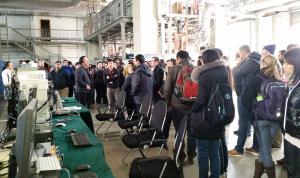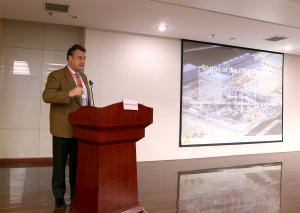The opening session included statements from USTC Vice-President C. Chen; SNST Dean Y. Wan; Organizing Committee Chair H. Qin from USTC; and Director of the Physics Laboratory of Ionic and Molecular Interactions (Aix-Marseille University) J-M Layet on behalf of the host university/school and organizing university, respectively. This was followed by presentations on the status of ITER by ITER Organization's Alberto Loarte and the status of activities for the Chinese fusion energy program and Fusion Engineering Test Reactor by J. Li from the Institute of Plasma Physics, Chinese Academy of Sciences.
The five-day event featured 16 lectures that dealt with the physics of the edge and pedestal plasmas including plasma energy and particle transport, magneto-hydrodynamics stability, Edge Localized Modes (ELMs) and their control, and the effects of ELM-driven transient power fluxes on plasma-facing materials. (The program and all lectures can be found
here.) In addition, the ITER International School included a tour of the Institute of Plasmas Physics, where the participants visited the EAST tokamak as well as facilities for the manufacturing and testing of in-kind components for ITER such as the superconductor cable for the toroidal field coils, the high temperature superconductor feeders for ITER's magnets and the test stand for the AC/DC converter units for the poloidal field magnetic coils.
The 8th ITER International School was a unique opportunity for young and talented students to explore the frontier physics of the ITER pedestal plasma and its influence on ITER's fusion performance and to share their enthusiasm for the development of fusion energy and the ITER Project with leading experts in the field.



